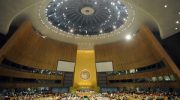The lack of clear explanations of what is collaboration and what is a way of survival is actively used by Russia.

Ukrainians who remain under occupation have very different reasons for making such a decision. However, the main task for them in this situation is survival. Oleksandr Klyuzhev and Anatoly Bondarchuk tell how to protect yourself during the occupation in the article “OCCUPIED. How TOT residents change and why time matters“.
Some citizens try to avoid any contact with the occupation administrations as much as possible. This strategy deserves great respect, but risks negative consequences for citizens. After all, one way or another they have to survive, receive pensions and salaries or educate their children.
Others, on the contrary, regardless of their political views, try to adapt as much as possible to the new realities and find their place in them.
After the full-scale invasion, the Russians are much faster than it was in ORDLO, eliminating the opportunities for citizens to ignore occupation administrations. For example, parents are threatened to select their children for refusing to teach them according to the educational programs of the Russian Federation.
In such conditions, residents of the occupied territories have two options, according to a military psychologist Oleg Pokalchuk.
- The first is to physically survive. No one has the right to ask people to sacrifice their lives without guarantees that this sacrifice will not be in vain.
- The second is a moral barrier. It is one thing when the occupier demands to sweep the street, and another when he says to participate in some ideological occupier preferences or strengthening of the occupying power.
“Here you can always find an opportunity, as they say, to “loop”. I think that Ukrainians are masters at this,” the military psychologist believes.
First of all, the state must explain to its citizens the limits of what is allowed and what is prohibited.
Even before after the full-scale Russian invasion, the Concept of Transitional Justice was developed, which provides for amnesty for persons who are involved in hostilities, but did not commit war crimes.
The state also planned to establish the principles of application of lustration to persons who performed the functions of public authority in the temporarily occupied territories. There was also an attempt to provide citizens with the necessary guidelines in the draft law on the principles of state policy in the transitional period.
The new aggression of the Russian Federation only exacerbated the need for certainty about what is “good” and what is “bad”, and what will be the responsibility for specific forms of interaction of ordinary citizens with the occupier. First of all, this is needed by the people themselves, who need to know on the basis of which principles they can build their survival strategy.
As of 2022, the state still does not sufficiently clearly explain to citizens the line between survival and collaboration with the occupier. These explanations are often formed on the march and depend on the development of events at the front, the prospects for rapid de-occupation.
But it is important to try to minimize the uncertainty and unspoken forms of interaction of citizens with occupation administrations that are unacceptable for the state. The communication vacuum is willingly filled by Russia, which, for example, threatens communal workers in the occupied territories with “criminal liability” after de-occupation.
Oleg Pokalchuk, in turn, warns of new risks and potential lines of division in Ukrainian society.
“”Body society”, when it recovers from the horrors of the war, will try to increase its self-esteem by repositioning itself as “more Ukrainian” and suppressing, oppressing, victimizing people who were in the occupation”, – explains Pokalchuk.
Such situations should be predicted and stopped in advance, the psychologist warns. IDPs from the occupied territories of Donetsk and Luhansk regions faced a similar attitude in 2014. That is, some frightened people are trying to follow other frightened people.
The “OCCUPIED” project is implemented by the civil network “OPORA”.
Read also: Expert explains how Russia is building a wall between Ukrainians under occupation and in the free territory
Related video
Is there a standard occupation technology implemented by Russia in different territories of Ukraine? How to distinguish survival from collaborationism? And how can the state maintain the trust of the residents of the temporarily occupied territories and prevent a gap between those who were in the occupation and those who avoided it? Read the article by Olexander Klyuzhev and Anatoly Bondarchuk “OCCUPIED. How TOT residents change and why time matters.”
See special topic: This year's Venice Film Festival began with Zelensky's speech and credits with the names of the murdered children. The President emphasized that the position of everyone sitting in the hall is important, the voice is influential, and the word is loud. WP: Guerrillas are a great advantage of Ukraine, which Russia refused to believe in The columnist of the American publication writes that, like the high-precision HIMARS strikes on Russian military targets, underground Ukrainian resistance is the result of American aid. The IAEA convoy stopped at one of the checkpoints. The Ministry of Foreign Affairs announced the risk of disruption of the visit to the ZNPP There they called on the occupiers to cease fire. The leadership of the Russian Orthodox Church is involved in crimes against Ukraine – the President of Germany He called to ignore the propaganda of the Roschurch. One of the power units shut down again at the ZNPP Currently, only one power unit is operating at the plant, which provides stable power supply to the nuclear facility.


